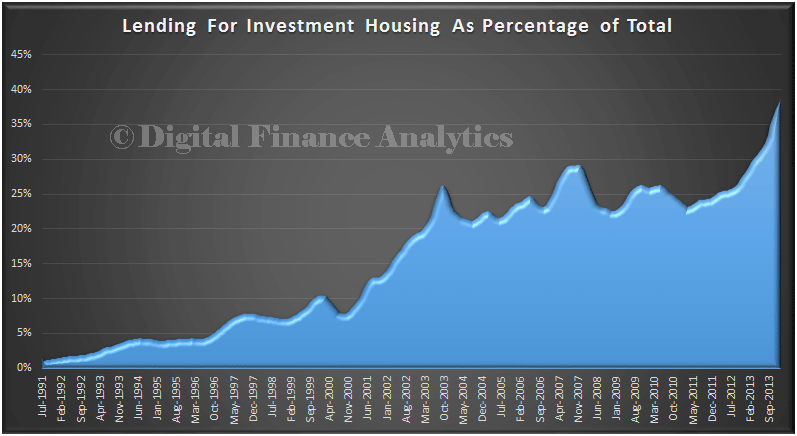
By Martin North, cross-posted from the Digital Finance Analytics Blog
Buried in the Reserve Banks minutes released today, is an interesting comment about using macroprudential tools to help manage the housing market. “Members discussed the experience in other countries where macroprudential tools had been utilised to slow demand for established housing and their possible application in Australia”. Well, I suppose discussing it, is a start, but what about some action!
We have been arguing for some time that in Australia, we need to move beyond the brutish interest rate lever to something more sophisticated. The Bank of International Settlements agrees, and versions have been implemented in counties like New Zealand, successfully.
“The BIS, using research analysis covering multiple markets, reached an interesting conclusion in their paper. Whilst there may be some benefits in capping Loan-To-Value ratios (as New Zealand has done, and the IMF advocated), the best mechanism to manage house prices is to target debt service to income ratios. The logic is because LVR controls won’t impact borrowing in a rising market, (as house prices rise, borrowing can grow). On the other hand a debt service to income ratio is not impacted by rising house prices, so consumers would not be in a position to borrow any more even if house prices did rise. Therefore it is a more effective control.”
In an environment in which on most measures, housing is less affordable than it should be, and where interest rates are low, we need mechanisms to redirect lending away from inflated housing towards productive investment in the commercial sector. The options to do this are to change the capital adequacy rules under Basel III, or implement macroprudential strategies; or both.
Interestingly though this would not necessarily impact foreign property investment, which is now subject to a review by the House Economics Committee. This is because the bulk of overseas investors do not seek local finance to purchase. The recent FIRB report highlighted they did not block a single deal last year, and that the Chinese bought ~$6 bn of residential property, in a market of more than $250 bn last year. As we have highlighted, the actions of foreign investors is one small factor in the mix, but it is not as significant as the broader questions of chronic long term supply issues, investment housing growth and credit availability.
 But, typically, we have fragmented activity, the RBA thinking about macroprudential intervention, the House Economics Committee thinking about Foreign Investors, the the Senate Inquiry on Housing Affordability. It really is time for some joined-up thinking on this important issue!
But, typically, we have fragmented activity, the RBA thinking about macroprudential intervention, the House Economics Committee thinking about Foreign Investors, the the Senate Inquiry on Housing Affordability. It really is time for some joined-up thinking on this important issue!
In our recent submission, we said:
DFA recommends the consideration of the following to help address affordability and accessibility of housing in Australia.
- Australia should develop a strategic housing plan which guides ongoing development, be it in current centres, or expansion into new towns. Current tactical plans are not sufficient. The plan should specifically address the supply of affordable housing.
- Strategies should be devised to increase land supply. State governments should reduce the current high levels of access fees for new development and revise planning criteria and processes. This has the potential to create considerable economic growth.
- Overseas investors should not be able to access first-time buyer incentive schemes, and the Foreign Investment Review board rules should be strengthened to reduce the impact of foreign investors on the local market.
- The RBA should have a direct multi-segmented housing affordability metric within its measurement framework. Affordability should be targeted at trend average, not rates experienced since the debt explosion of the 2000 onwards.
- Macro-prudential policies should be employment to control the growth in lending. In line with the recommendations from the Bank of International Settlement debt to income servicing ratios should be employed as the policy tool of choice.
- Negative gearing should be tapered away and removed for new transactions.
- Joint equity schemes like the UK’s Help to Buy Scheme should be considered as a tactical step to assist some of the “Want-to-Buys.”

